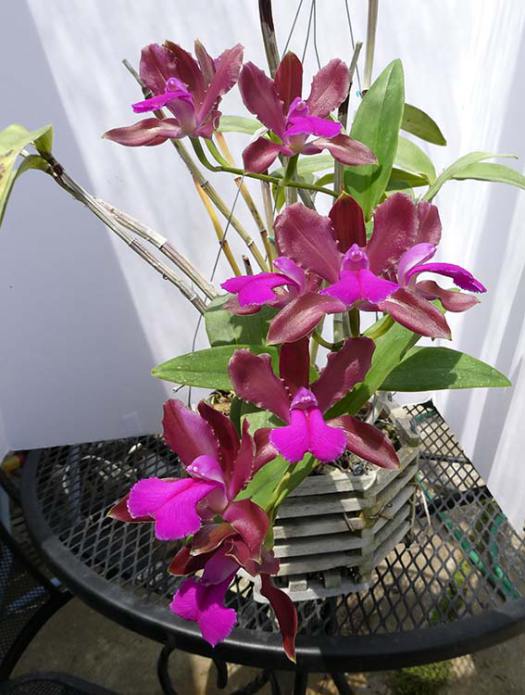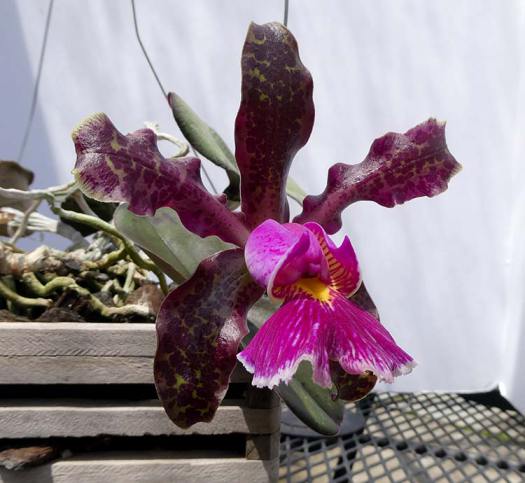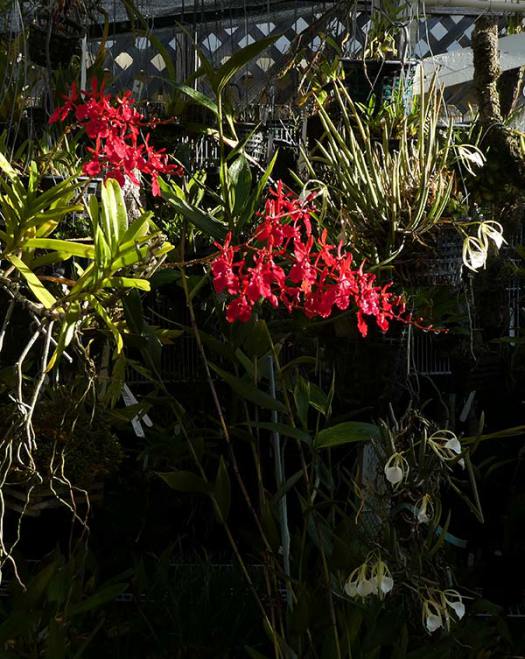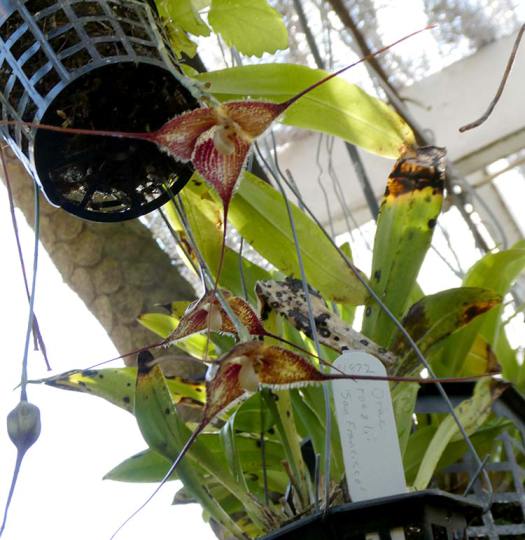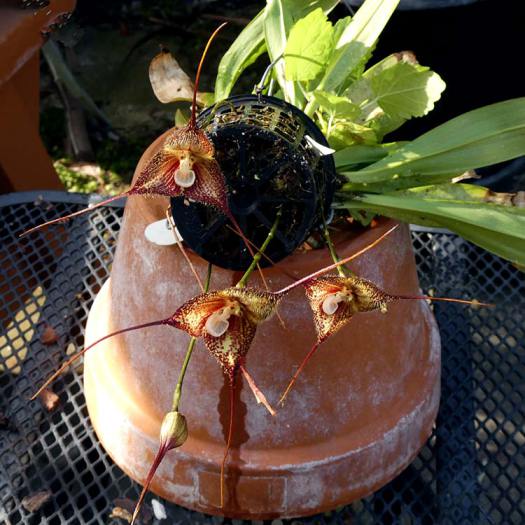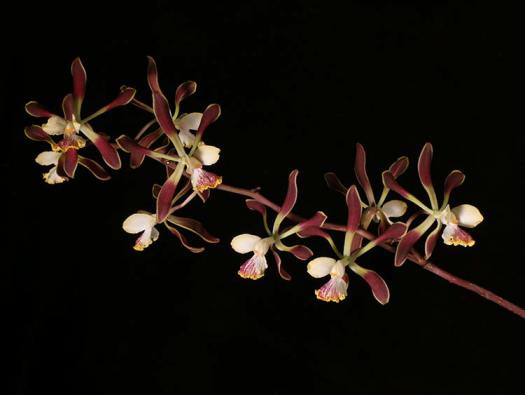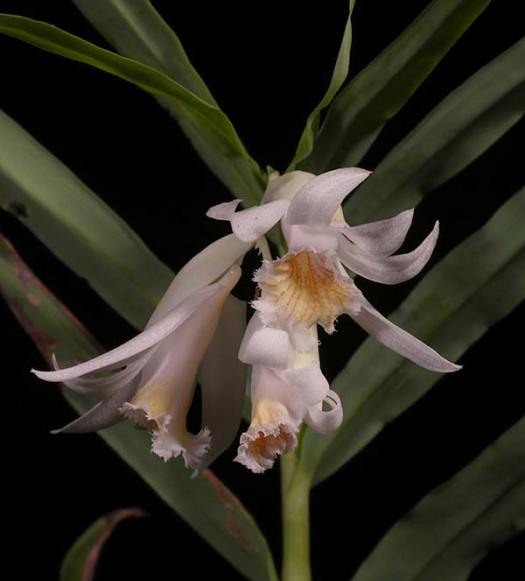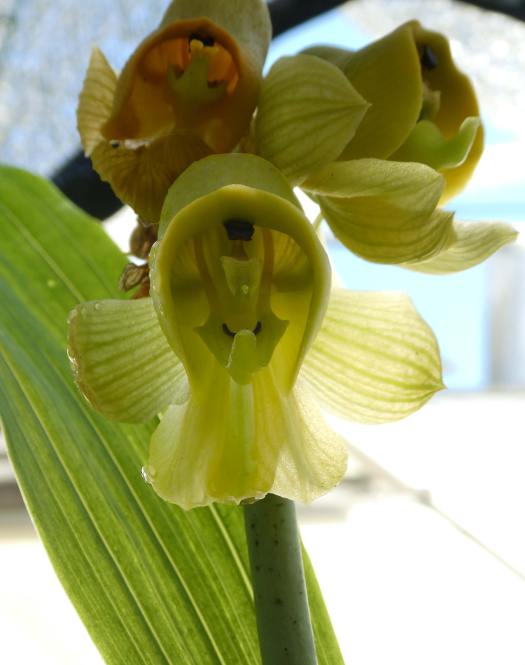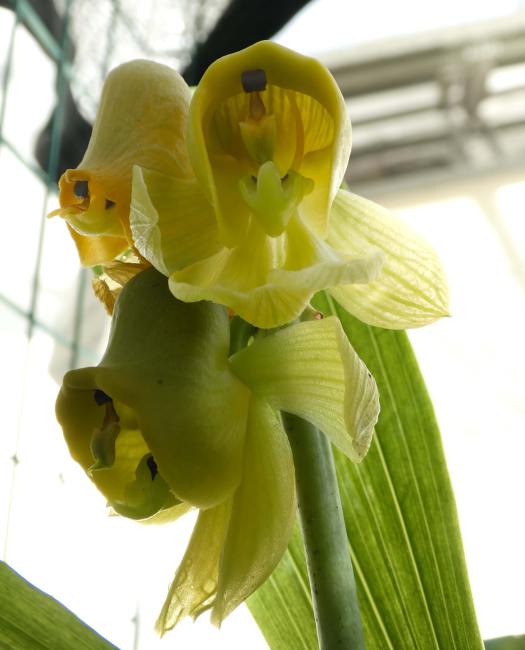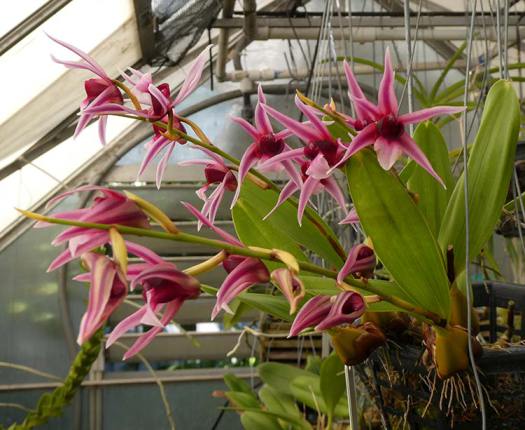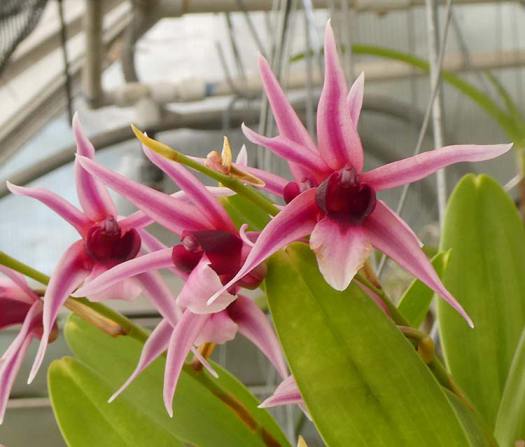September 2021
From Lynn Wiand:All orchids grown outdoors, coastal southern California |
|
From Jan Hennessey:
|
|
 Aerangis mysticidiiGrown in the greenhouse and has been a fairly easy one. I've enjoyed watching the blooming process unfold. |
|
From Scott McGregor:All orchids grown outdoors, coastal southern California |
|

Angraecum sororiumBlooming slightly later than Roberta’s from last month, this large but slow-growing species needs bright light to bloom, and even so, is a shy bloomer for me. I may try giving it some full sun as it seem to prefer in situ in Madagascar, and it supposedly can handle a light frost. The flowers have a delightful clove scent at night. |
|
Dendrobium limpidumRelated to Dendrobium dichaeoides, this PNG mini species likes it cool and moist and rewards you with long-lasting, intensely color-saturated flowers |
|
 |
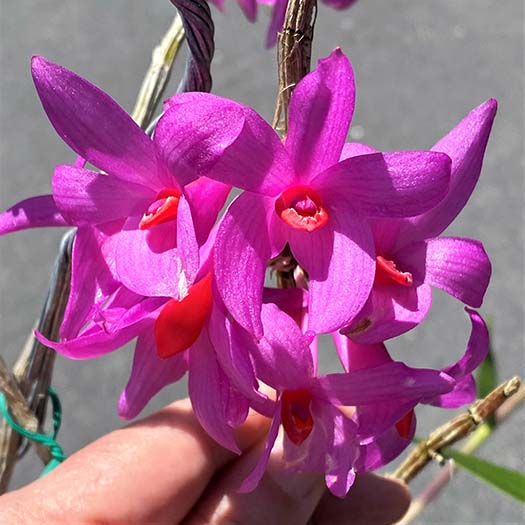 |
Dendrobium glomeratum (crepidiferum, sulawesiense)This species is from the Molucca Islands, to the West of New Guinea, and is sold under a variety of names. I find it to be the easiest of all the PNG Dendrobium species, reliably blooming once or twice a year on old canes with long-lasting 1.5” magenta and orange/red flowers that are amazingly color saturated and crystalline. It also readily hybridizes with D. cuthbertsonii yet retains the cuthbertsonii flower and plant characteristics. When crossed back to cuthbertsonii (i.e. 25% glomeratum) you end up with a hybrid that looks exactly like the pure cuthbertsonii but is much easier to grow. |
|
 |
 |
Epidendrum embreeiThe individual flowers aren’t much, but larger plants with long-lasting sprays of color brighten your summer shade house. Easy to grow |
|

Rhynchostele (Lemboglossum, Odontoglossum)
|
|

Rhyncholaelia digbyanaFamous fringe with a pink tinge. |
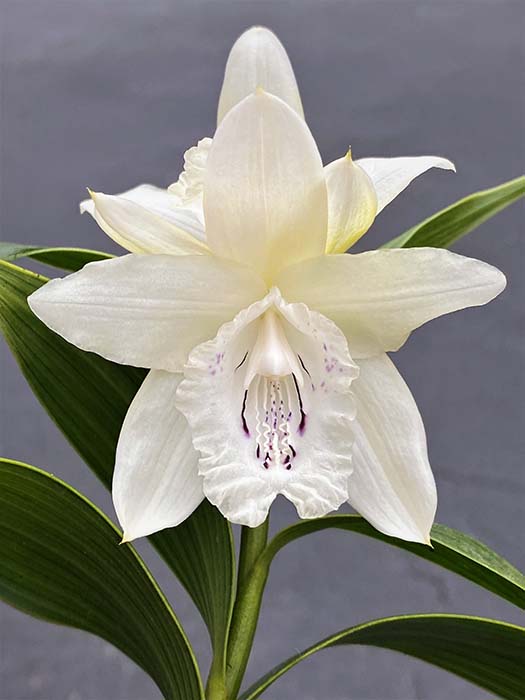
Sobralia undatocarinataOne of my favorite Sobralia species—only about a foot tall and very fragrant (a bit lemony, like Rhyncolaelia digbyana). Similar to S. maduroi, but why choose—grow them both! |

Sobralia xantholeucaOne of my favorite Sobralia species for the bright lemony yellow color, and in this plant, a frilly lip. It tends to start the season with a few sporadic flowers and then finish with a flush bloom. |
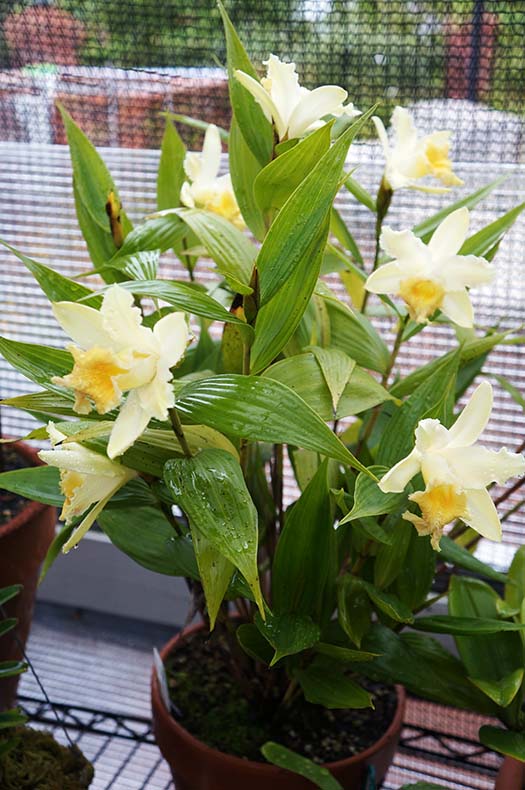 |

Sobralia fimbriataShort-lived, but delightfully fimbriated and fragrant flowers on compact (12-16”) canes. Grows decently outdoors but suffers a bit in our winters (some black and spotted leaves), but seems to recover enough during summer to make it through the following winter. |
|
From Roberta Fox:
|
|
Outside in the Back Yard: |
|
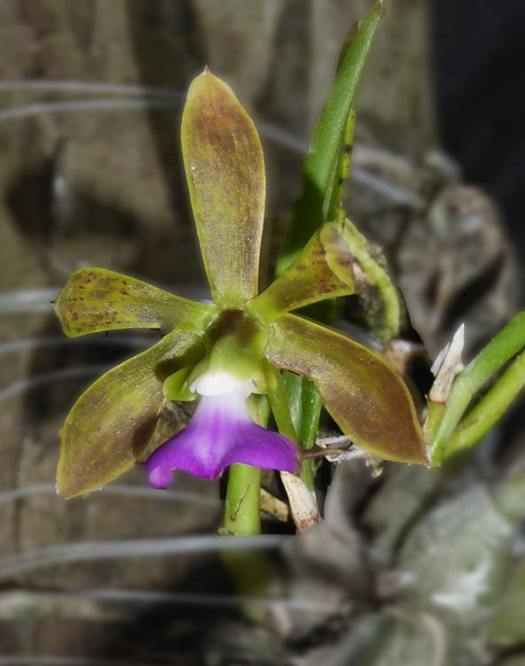 |
|
Encyclia bracteataA cute minature, with very long-lasting (6 weeks or more) flowers. It grows very slowly, maybe would be more robust with a bit more warmth. But it has been very reliable for me for nearly 10 years. |
|

Cattleya harrisoniana 'Volcano Queen'An easy outdoor grower. Definitely C. harrisoniana. |
|
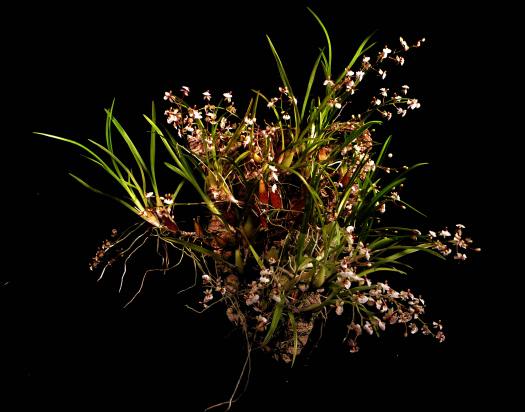  |
|
Ornithophora radicans
|
|
 |
|
Maxillaria phoenicantheraVery floriferous. In the same group as Max. picta(which is a spring bloomer), Max. ubitubana, and a several others that grow easily on my patio. |
|

Dendrobium chapaenseDedicuous, blooms on old bare canes. I don't particularly dry it out, and that doesn't seem to be a problem. Crystalline white flowers that last longer than their fragile appearance would indicate. |
|
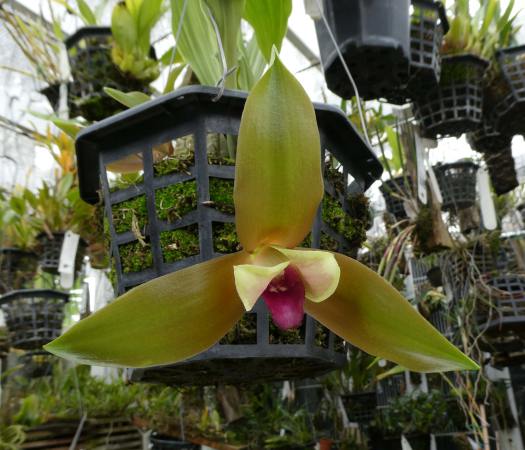
Lycaste schillerianaColor of the lip seems to vary somewhat from year to year. This is as dark as it gets, other times it has a lot of white. Flower has heavy substance. This one definitely needs a basket, an occasional flower comes from the top, but most poke out of the side or bottom. |
|
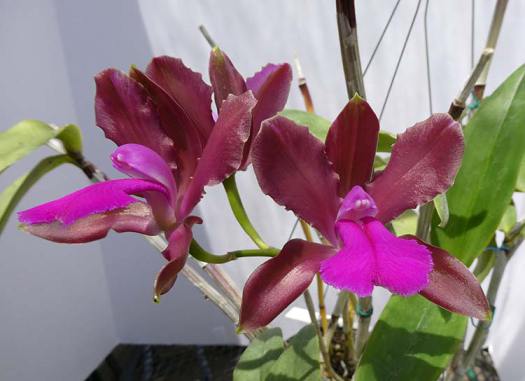 Cattleya bicolorSome cultivars have segments that are bronze or green, but all have this brilliant magenta "spade shaped" lip. |
|
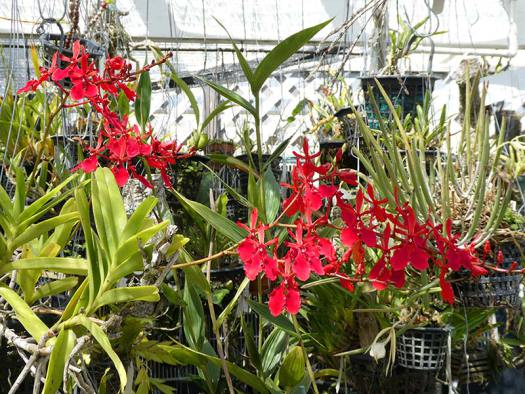 Renanthera imschootianaSome more views of this beauty. It is quite cold tolerant. It is native to Assam, Myanmar, southern China, Laos and Vietnam at elevations up to 1500 m. |
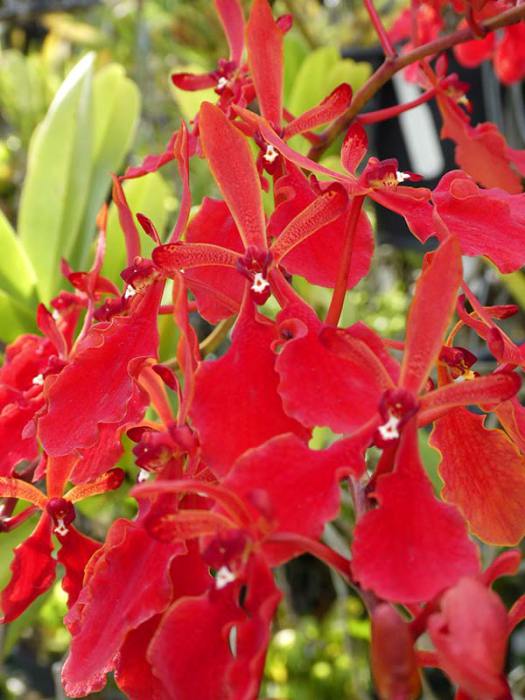 |
Dracula woolwardiiThis summer has been quite mild, but still has warm days. However, evenings and mornings are cool and Draculas are putting on a show. It is a treat to have three flowers open simultaneously, I think the most that I have ever had. There are more on the way when these drop. Flowers partially collapse in the heaf of the day, to open again in the morning. |
|
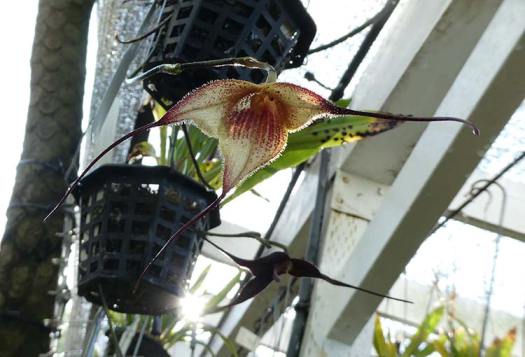
Dracula bellerophonMore Dracs... along with this one in the foreground, behind it in the photo above you can see my faithful Dracula roezlii, which has been blooming on and off for several months. |
|
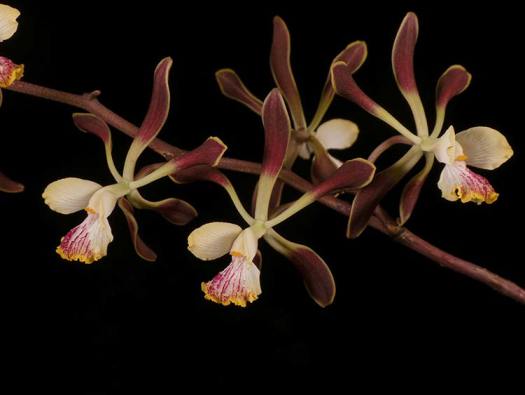 |
|
Encyclia alataA somewhat reluctant bloomer, it probably would prefer to be a bit warmer. Very fragrant. |
|
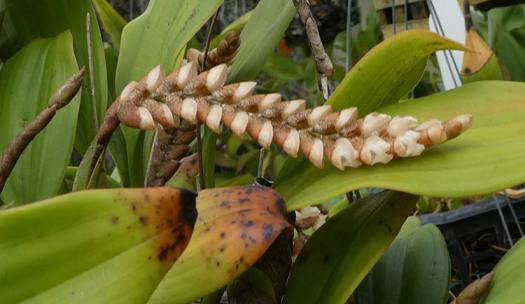
Pholidota imbricataFlowers are not very impressive, but the developing inflorescences are interesting. They're reminiscent of a shrimp or other crustacean. |
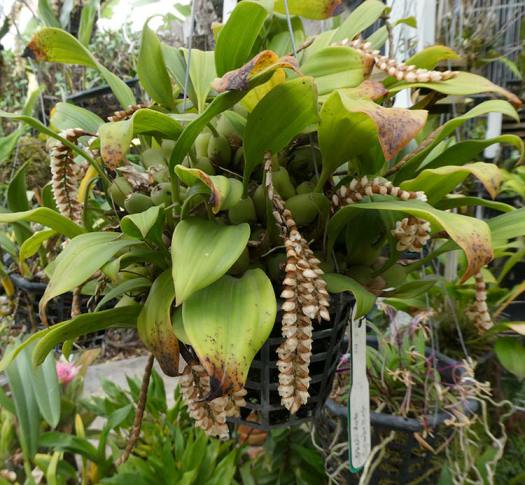 |
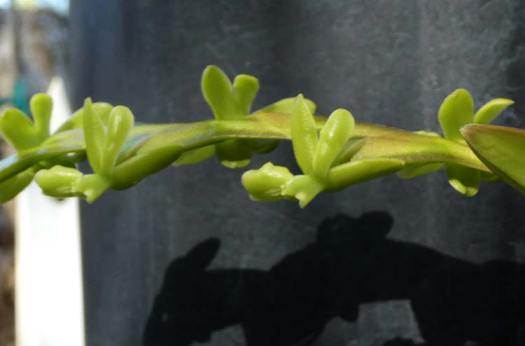 Epidendrum rigidumWeird green flowers that halfway wrap around the inflorescence. The plant is a rambler. I grow it on a piece of tree-fern trunk |
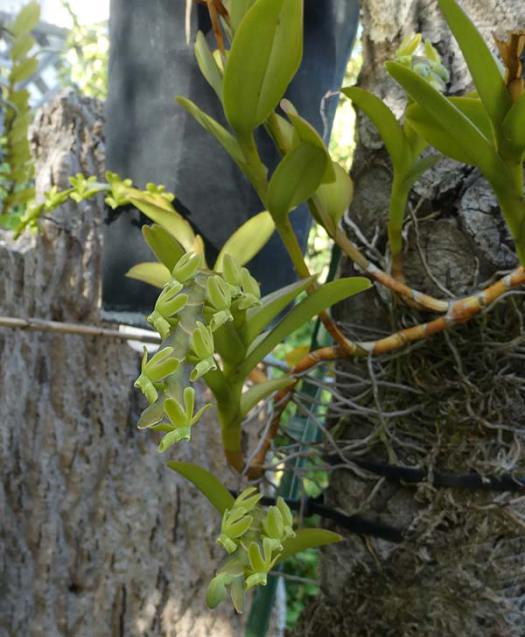 |
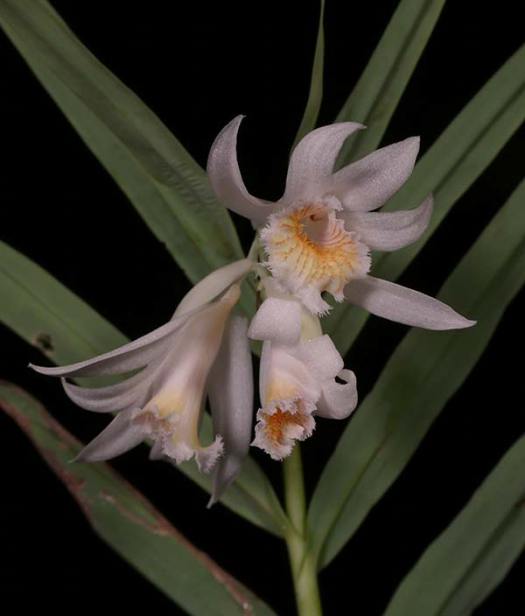 |
|
Thunia albaFlowers nod downward, so one has to get underneath to see the full beauty of the flowers. The segments are crystalline-white, the lip is colorful and fringed. This terrestrial species is deciduous. Once the leaves drop, the bare stalks look dead, but don't cut - they are the energy store for next years' new growth. |
|

Prosthechea prismatocarpaA vigorous plant that tends to spread out. I grow in a shallow bulb pan so that I can provide the surface area for the mass of pseudobulbs without escessive volume, since it tends to be rather shallow-rooted. |
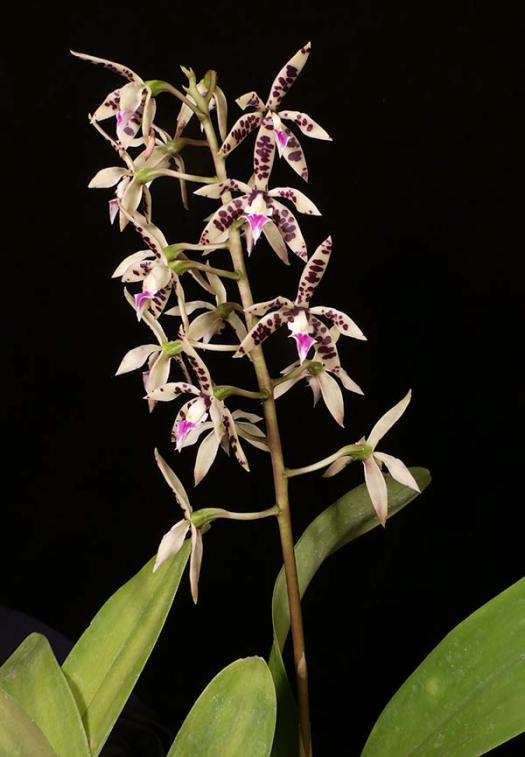 |
Catasetum planicepsI almost missed this one... flowers have the helmet shape of female flowers, which look pretty much the same for all of the Catasetums so I didn't pay a lot of attention to them. One day, I looked more closely, and noticed that these were actually males. When I looked this one up (both in Orchidwiz and in IOSPE) there was no description at all of the female flowers. This is an odd one... but interesting. I place it here at the end of the outdoor-growing species and just before the greenhouse ones... Starting in approximately April, whenever nights get above about 55 deg F, I move the Catasetinae out of the greenhouse once they have well-developed growths and are ready to be watered regularly. THey will move back to shelter once nights get chilly, usually around the end of October or early November. It's crowdd while they stil have leaves, but dormancy follows pretty quickly, and then they don't take up so much space. |
|
In the greenhouse... |
|
Epigenieum (Dendrobium) treacherianumFlowers have heavy susbstance. Last year I got one spike, this year three. I have seen pictures of a specimen plant owned by a grower in San Francisco, that is huge and spectacular, so it has lots of potential. Hopefull, it won't grow too fast, I don't have room for a huge one, but certainly magnificent. This one, like other Epigenieum species that I have, seems to grow best once it escapes from the basket. The mounted ones grow off the mount, the ones in baskets have their new pseudobulbs outside the edge of the basket with roots in the air. |
|
 Habenaria medusaWhile I can't pick a "favorite orchid", there are many that I really love, this species is certainly one that I find particularly special. The "whiskers" emerge from the orange lip, giving the flowers a dandelion appearance. The tubers do increase from year to year, so display just keeps getting better. After blooming it goes dormant. I water infrequently while it is dormant but don't let it dry out completely.Regular watering starts around April, and the new growth emerges. |
 |
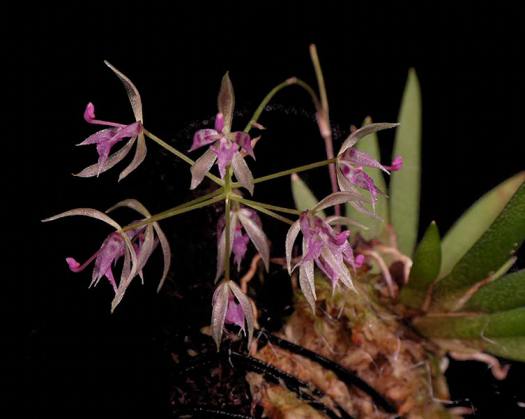 |
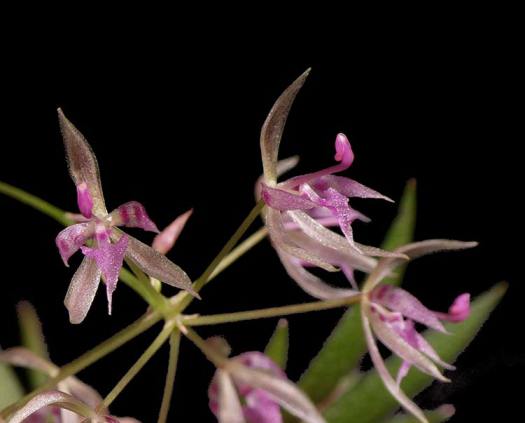 |
Macroclinium manabinumThe delicate, intricate flowers are translucent. They are produced as an umbel , emeriging from a single point. An inflorescence can bloom sequentially two or three times, so don't cut spikes until they are completely dry and brittle. |
|
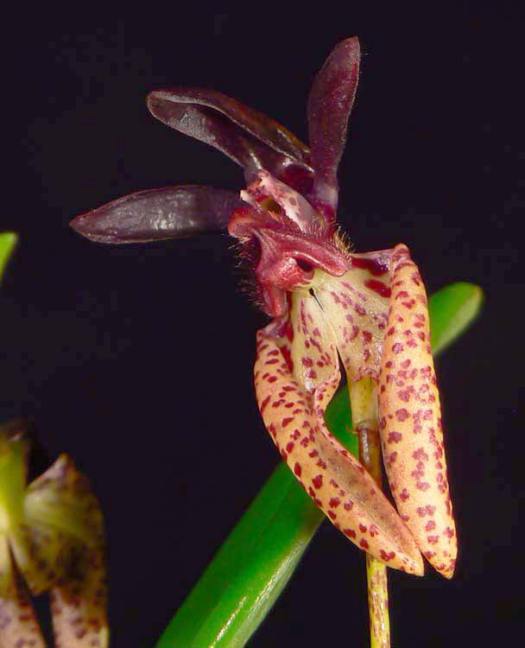 |
Bulbophyllum lasiochilumFlower is about 2 inches. So far I have not had more than one at a time, but hope for more as the plant matures. It grows mounted. |
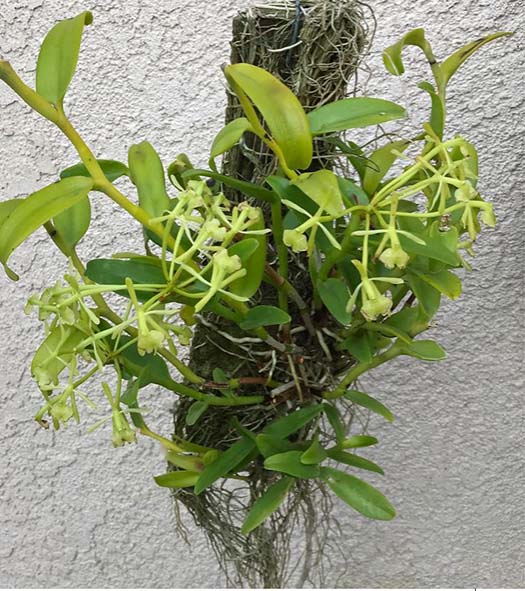
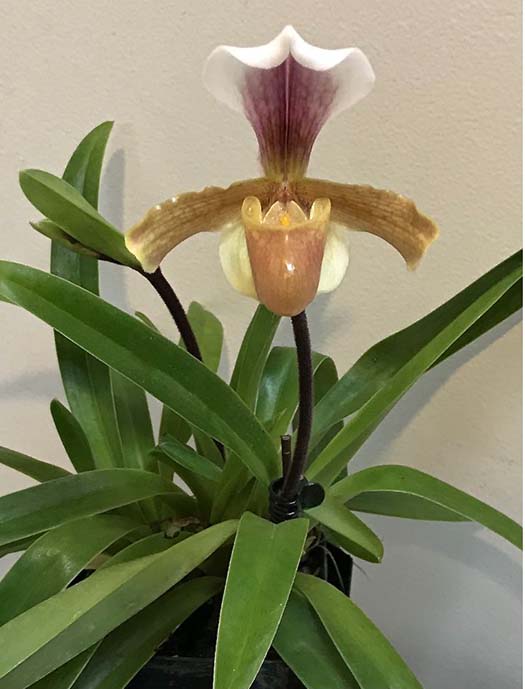

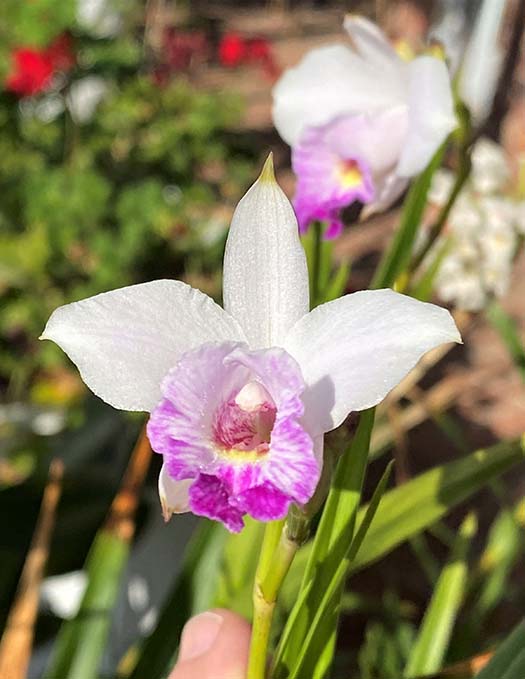
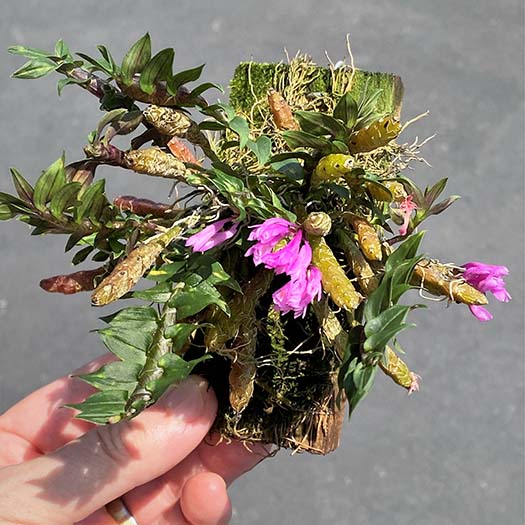
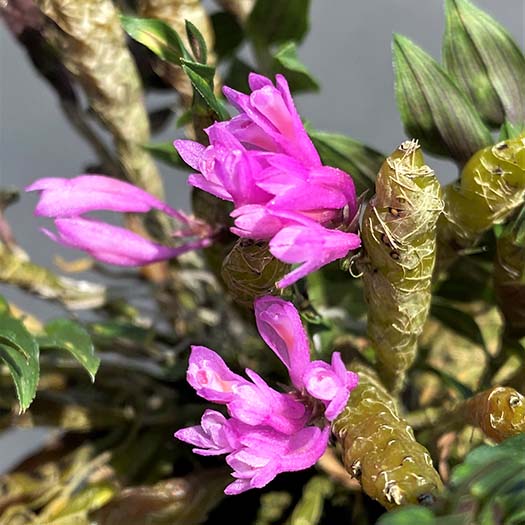

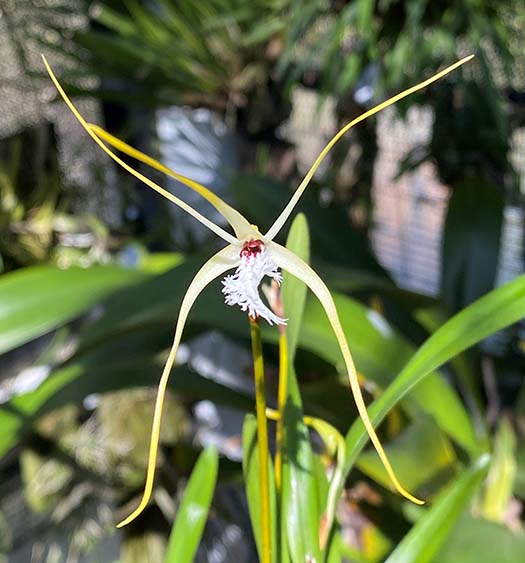
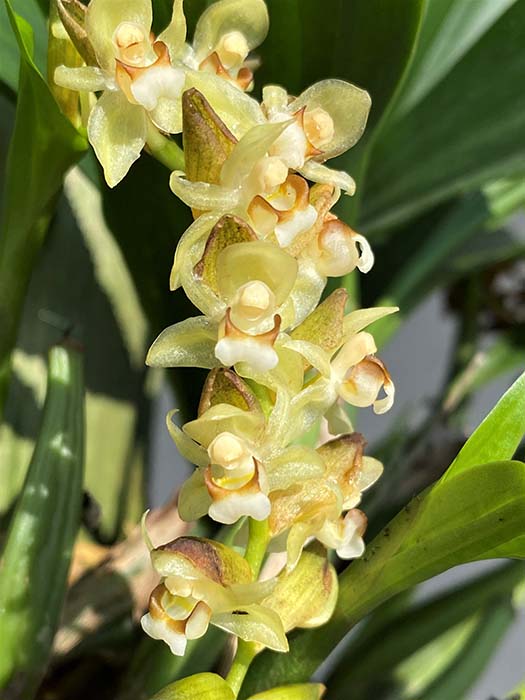
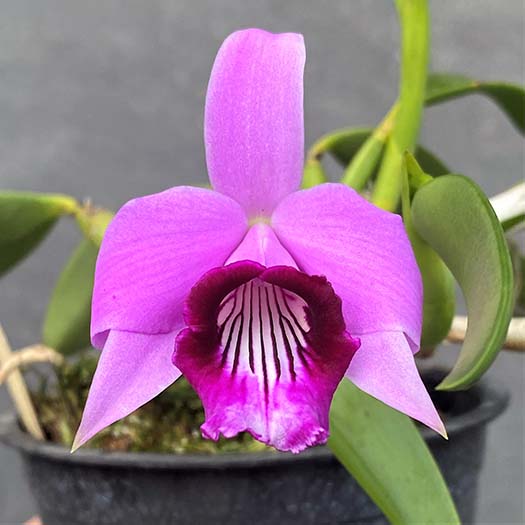
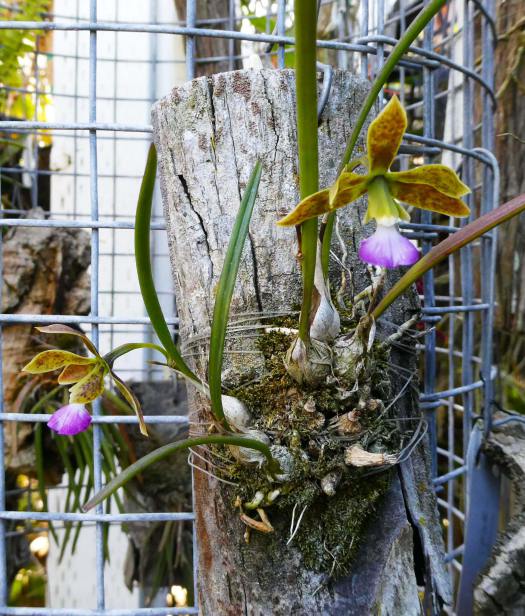

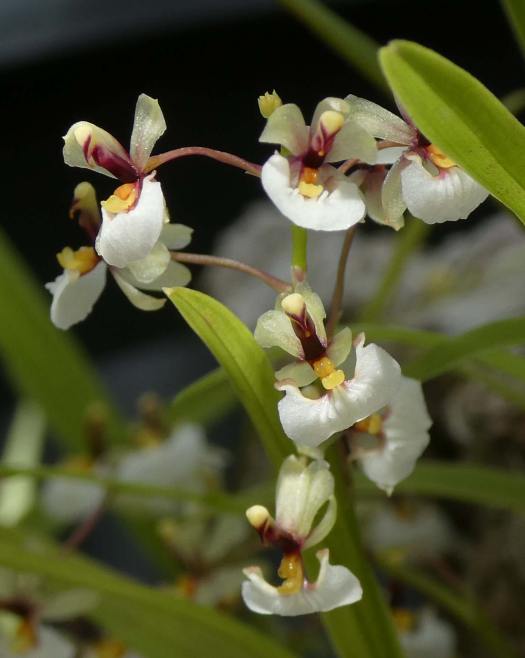

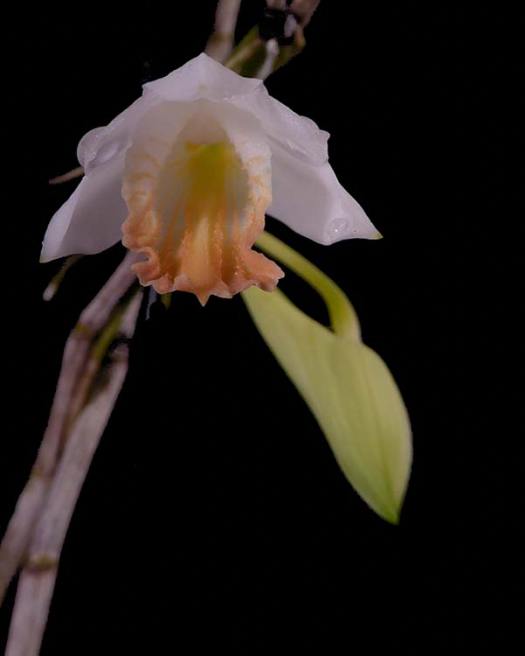
 hirudinis.jpg)
